We have often been asked why the street running along the river from the library to the corner of Union and Main is called Hog Alley. The short answer is “Why Not?” – it’s been called “Hog Alley” forever – but as this has never seemed a satisfactory response, we thought it best to do some research and provide a short but not very exciting explanation.
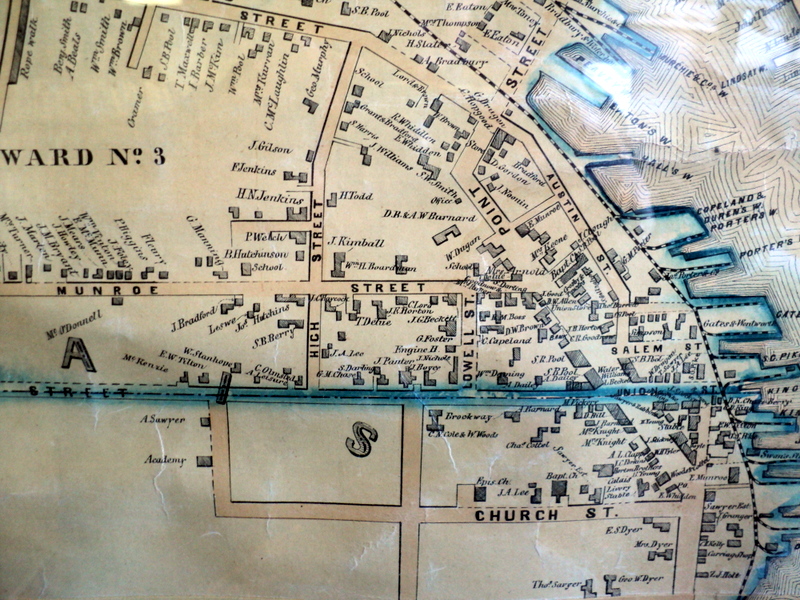
The answer lies in the history of the Calais waterfront which was an altogether different place in the 1800’s. To begin with the street we know as Hog Alley didn’t exist. There was no street running parallel with Main Street along the river. In fact most of what we know as Main Street was called Point Street because it ended at Ferry Point. Main Street ran from Hinckley Hill to Church Street. For those who would like to see for themselves the 1856 Calais street map is provided above.
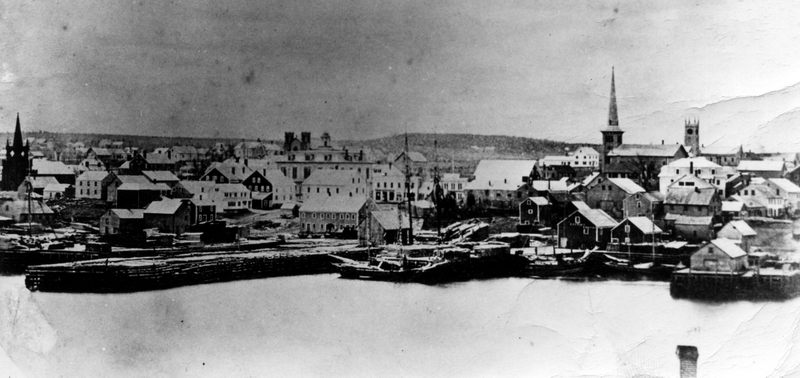
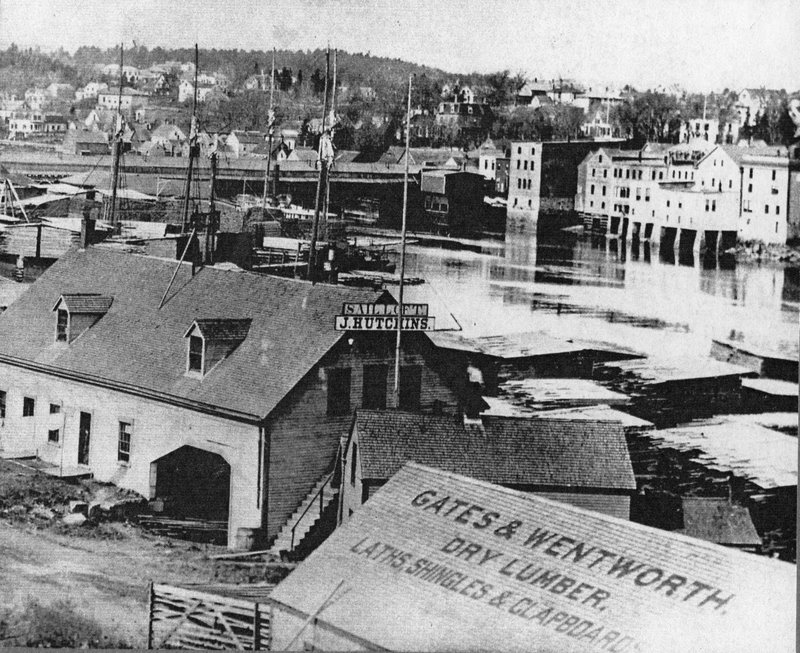
What we today call Hog Alley was, in Calais’ early years, a warren of short streets, dead ends, grog shops, flop houses, and even the city lockup, all catering to legions of sailors who arrived at the Calais waterfront from around the world. The first photo above shows the Calais waterfront in 1863, note the steeple of St. Anne’s Church to the far right, the second “Hog Alley” in the 1890’s. The bridge is top center. As with all cities the Calais waterfront was the worst part of town and most Calais folks, including the hog reeve, avoided the waterfront if at all possible. For those unfamiliar with hog reeves they can best be described as “hog police”. Hogs are incredibly destructive critters- they can destroy a lovingly tended garden in a matter of minutes if allowed to run loose and as most residential homes in Calais had large gardens in those early years an ordinance required hog owners to keep their hogs penned. Owners were also required to have a ring in the hog’s nose to allow people like the hog reeve to get a rope on the wayward hog which, after capture, would be taken to the city pound to be incarcerated until the owner paid a fine. On the waterfront the hovels and tenements had no gardens and hogs were allowed to run free. Although quarters were cramped there was enough space on the waterfront to raise hogs and nearly everyone did. Hogs “porked out” on a rich waterfront diet. A 1852 article in the Advertiser reports “The Largest Hog In The World” is now on exhibit in Calais, standing 7 feet six inches and weighing 1200 lbs. It goes on to say “If this hog was fat he would weigh 1400 pounds”.
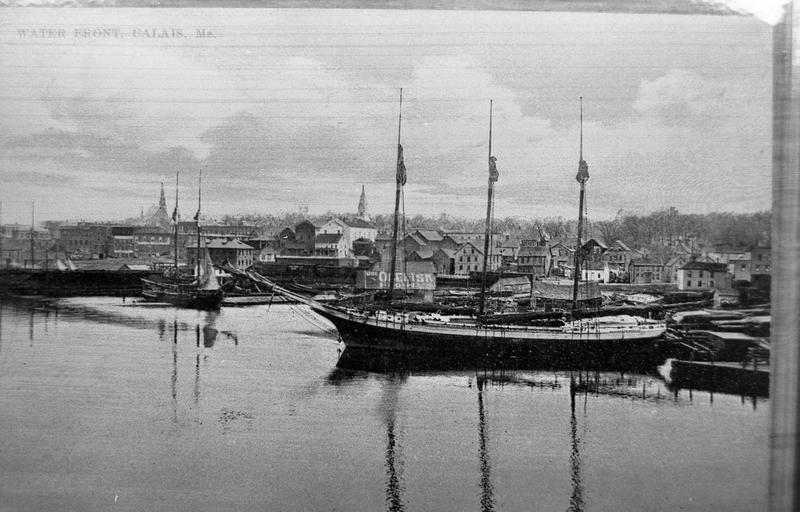
The hog is also not finicky about what it eats-the “use by date” is a source of great merriment amongst hogs and probably their idea in the first place. On the waterfront ships delayed by bad weather and the boarding houses usually guaranteed plenty of food no longer fit for human consumption.
As Ned Lamb, Calais’ eminent historian, put it while commenting on an old ad in the Calais Advertiser:
“NOTICE I smoke My Own Ham and Shoulders”
Pigs were kept everywhere, all over the town, but down on Union Street below Main there were boarding houses, an ideal chance to get feed for them, so that part of the street got the name of “Hog Alley” though probably it was no worse than other sections. Pigs could be kept in small quarters while a cow had to have pasture and a lot of hay hauled in. You probably do not remember the old rime, but here it is:
“The Boston ladies’ mouths are so very small
You wouldn’t think they had any mouths at all.
But inside they are so very big
They’ll hold six families and each keep a pig.”
The name “Hog Alley” has been used to describe this part of Calais for probably 150 years. An 1883 article in the Boston Globe reports a possible murder in Hog Alley:
A Man and Two Women Spend the Night in a Drunken Orgy.
One of the Women Found Dead In the Morning The Others Arrested.
Special Dispatch to The Boston Globe. Calais, Me., January 1, 1883.
About 1 o’clock this morning the police were called to a dilapidated building situated in what is commonly called Hog Alley, formerly a very disreputable but now a usually orderly neighborhood. The second story, consisting of two rooms, has been occupied for the past few months by two drunken characters named Tim Toomey and his wife Mag. They were both absent when the police arrived, but on the floor of the back room lay the body of a woman, naked to the waist, bruised about the face, neck and breast and covered with blood. The woman had apparently been dead some hours. The room was in great disorder. Portion of chairs, stove and bed were distributed in all directions and covered with blood stains. A common jack-knife, thrown in one corner was also covered with blood. The body was identified as that of Mrs. William Carr, about 40 years old, formerly of Miramichi, N. B, whose husband was drowned here some years ago. Toomey was induced to return from across the line, and both he and his wife were arrested. Both are intoxicated and tell conflicting stories. Toomey told your correspondent that the murdered woman came to his house about 8 last night. After drinking what liquor she brought with her, Toomey went to St. Stephens and procured another pint, which the three drank, after which Mrs. Carr fell from her chair to the floor and commenced to bleed at the mouth. Being a large woman, they were unable to lift her and thinking the flow of blood would soon cease, put pillows under her head, covered her with a comforter and then retired. The neighbors say the drunken orgies were kept up until late this morning, when both Toomeys left the house. Mrs. Toomey went to her daughter’s covered with blood. The daughter says she went to the house supposing her father had been abused, and finding the woman lying there notified the police. Mrs. Carr bears a bad reputation. A coroner’s inquest will be held.
The inquest found she had died of “apoplexy” and her injuries were sustained when she fell.
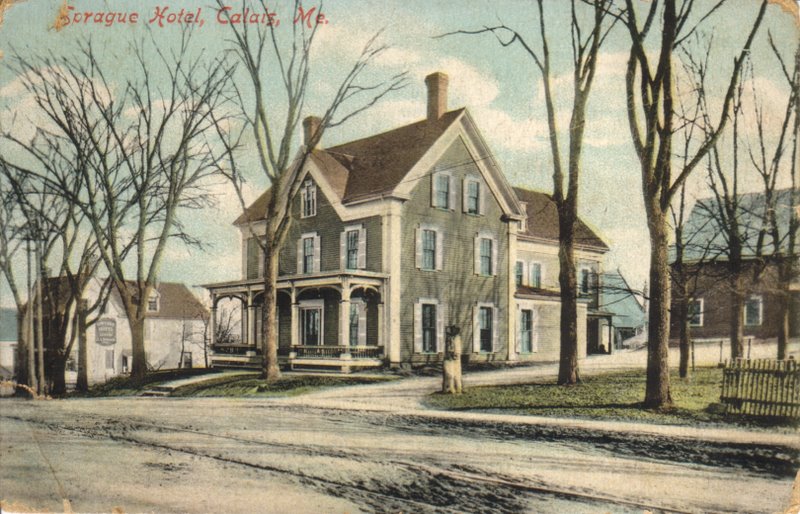
From the Bangor Daily in 1901:
A party of Hog Alley loafers, who frequent the backyards and concealed portions of the city when good people sleep, succeeded in locating a hidden treasure Saturday night-Just such a treasure as Marshal Crossman and his deputies are looking for. One of these men had been getting some rhubarb in a backyard on Church street Saturday, when he noticed a man roll a ten-gallon keg, evidently whiskey, into a hole in the ground back of the Sprague House. Accordingly after the midnight hour, Saturday, he and his chummies went to the spot; but instead of the whiskey they found a sack containing bottles of beer. Whether they had previously obtained the keg or not Is unknown, but they Immediately communicated the whereabouts of the beer to Policeman John Coffran. The officer followed them to the spot and procured one of the bottles, which he carried to the city rooms as evidence. He then went back to the place where the beer was and arrived in time to see the chums carrying it away. He stopped them and ordered them to take it back. But it is learned that they succeeded in getting away with it, later, in every sense of the words quoted. Who the beer belonged to Is a mystery which only a few of the intimate can fathom.
We would point out that the Sprague (House) Hotel later became the Mecca and Portside which may explain a good deal.
So, after all this Hog Alley is called Hog Alley because large numbers of hogs ran wild there back in the day. I suppose I could have just said that.
